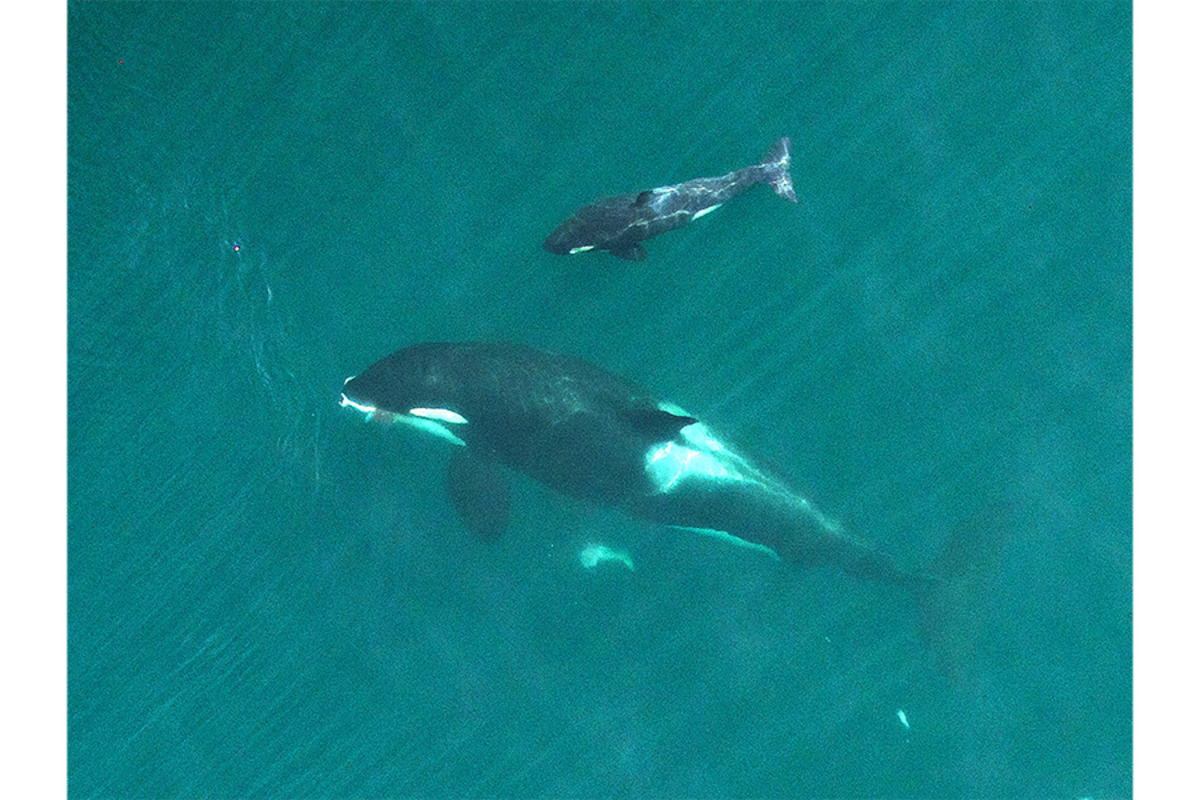How drones can help us better understand whales
Loading...
Marine biologists are using unmanned aerial vehicles to study whales. The remote technology gives researchers privy access to wildlife in a number of ways, such as capturing images.
A hexacopter drone fitted with a specialized camera and other equipment – such as a pressure altimeter, which records altitude of each shot – can hover about 100 to 150 feet over a whale pod and provide scientists with vivid views that were previously unobtainable.
Discussing fieldwork conducted in May, marine mammal biologist John Durban of the National Oceanic and Atmospheric Administration (NOAA) said, “We can’t put a gray whale on a scale, but we can use aerial images to analyze their body condition — .”
Scientists operate the drone remotely from a boat. Most recently, such efforts yielded a celebrated set of photographs of endangered Puget Sound orcas that are experiencing a "baby boom" this year. Researchers from NOAA Fisheries and the Vancouver Aquarium use the images to measure and track the health and growth of individual whales over time by monitoring how fat or thin they are in good or bad years for salmon runs. A decline in prey, along with contaminants and disturbance from vessel traffic, are among the reasons the animals are declining, The Associated Press reports.
"What we're interested in is change over time that we can attribute to environmental conditions," said Lance Barrett-Lennard, a senior marine mammal scientist at the .
Some of the images revealed close family relationships between orcas, including a baby orca nursing with its mother and another of two whales bringing salmon to a mother and her calf. In one case, researchers captured images of a pregnant whale and then later of that whale with a newborn orca.
To help assess the health of whales living in the Stellwagen Bank National Marine Sanctuary, about 45 miles east of Boston where there is significant ship traffic and pollution, researchers at the Woods Hole Oceanographic Institute on Cape Cod are using a specialized drone to monitor humpback whales, not only photographically, but also by from the whales’ blowholes, Reuters reports.
According to a release from Woods Hole, the drone flew 125 to 150 feet above sea level and shot photos, and “swooped down to 10 feet above sea level to collect 20 breath samples from 16 whales." The breath samples provided scientists with DNA and hormone and bacteria measurements. Researchers plan to use the drone next winter to collect samples from the same whale species living near the Antarctic Peninsula, which is relatively pristine.
Michael Moore, director of the institute's Marine Mammal Center, said "This will give us a new understanding of the relationship between whale body condition and health in the context of habitat quality."
Material from The Associated Press was used in this report.




